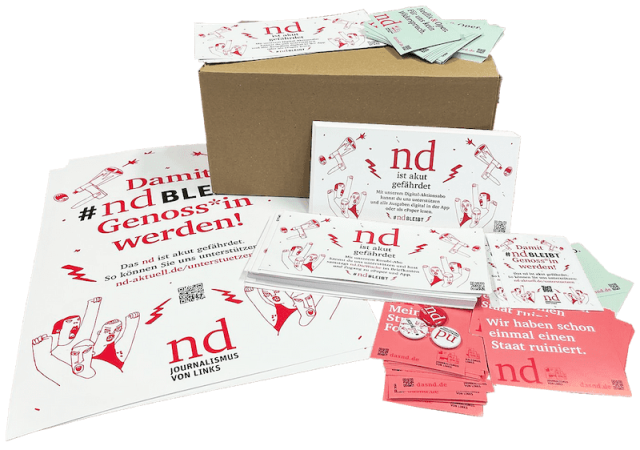In northern Germany, too, the climate influenced construction and lifestyle in the Stone Age.
Photo: dpa/Markus Scholz
With the end of the Ice Age it became warmer and warmer, the glaciers melted and retreated more and more northwards. The land became greener, animals came and then people who saw that it was good land and settled there to this day. This could be the short version of the past 12,000 years of Northern and Central European history. But it never went quite so straight. Warm periods were replaced by colder phases, which sometimes came very abruptly. A research group from the University of Kiel and the Roots Cluster of Excellence led by Magdalena Bunbury recently published one together with colleagues from Oslo, Tromsø and Stavanger Studywhich aims to uncover the connections between climate fluctuations, cultural adaptations and population numbers.
The study covers the period between approximately 4300 and 1100 BCE and spatially covers the area from Arctic Norway at 75 degrees north latitude to southern Denmark and the adjacent northern German plain, i.e. around 50 degrees north latitude. 49 high-resolution climate archives were used to get a detailed picture of regional and local climate developments. It became clear that the region had to be divided into three climatic zones: southern Denmark and the northern German plain, southern Norway and arctic Norway.
nd.DieWoche – our weekly newsletter

With our weekly newsletter nd.DieWoche look at the most important topics of the week and read them Highlights our Saturday edition on Friday. Get your free subscription here.
The study establishes a connection between the data on climate change and the available archaeological data on population development. In order to get a comprehensive and detailed picture, hundreds of scientific studies and unpublished research material on the settlement history of the region were evaluated to study the development of population density. The researchers identified 6,268 house descriptions from around 1,500 archaeological sites, which paint a reliable picture of population development in the Neolithic and older Bronze Age.
New hunting areas in the north
The region was sparsely populated until the beginning of the Holocene, but rising temperatures attracted more hunter-gatherer groups to settle here. Finding new hunting grounds was an adaptation strategy that eventually led hunter-gatherers to Arctic Norway. As the latitude increased, the prey changed from red deer to reindeer and marine mammals. Agriculture played only a minor role throughout the study period and disappeared completely in times of cooler climate. Only in the earliest modern times did this change somewhat.
Fishing became increasingly important throughout the area and the population slowly increased. The decisive turning point came around 4000 BCE, when the climate was milder than today. 1500 years later than in Central Europe, knowledge of agriculture came to southern Scandinavia and the population increased with the improved food supply. The hunters cautiously approached the new way of life, as the archaeological data makes clear. About 300 years were needed for the transition from fishing, hunting and gathering to agriculture, which continued to be supplemented by the three other activities. Emmer and, a few centuries later, barley were the first and most important crops, while initially sheep and goats and then pigs and cattle were kept. Settlements were now located inland rather than on the coast and houses with two rows of posts were built for the first time as population density increased.
Cooling and reheating
Between 3450 and 1450 BCE the climate slowly cooled. The team calls this the “2250 BCE event” to give an average. However, regional differences over this long period were significant. The research group assumes that the cause is changes in the North Atlantic Oscillation – roughly speaking, in the flow conditions of the Gulf Stream and its interactions with the atmosphere.
People experienced colder and rainier periods and population numbers fell. The construction style changed to pit houses. The recessed floor retained heat better in the upper area, while the lower area, where the crops were stored, was colder. In southern Scandinavia, people grew more crops to compensate for crop losses, while those in southern Norway adopted a semi-nomadic lifestyle with livestock as their main focus.
During this period, trade with southern Europe was also interrupted, in particular amber being exchanged for bronze items. The Santorini volcanic eruption was one cause of this disruption and resource scarcity may have been another.
With the renewed warming, combined with the discovery of metallurgical resources in Jutland and northern Germany and renewed population growth, the Bronze Age also developed here. The pit houses were abandoned and houses with two and three rows of posts were built again. The archaeological remains indicate that society became richer and leadership elites were formed.
The present investigation is not the first of its kind that Roots has conducted. A few years ago, the Cluster of Excellence published a similar study in which the connection between climate fluctuations and population development in central Germany with the Harz as the center was examined.
#ndstays – Get active and order a promotional package

Regardless of whether it is pubs, cafés, festivals or other meeting places – we want to become more visible and reach everyone who values independent journalism with an attitude. We have put together a campaign package with stickers, flyers, posters and buttons that you can use to get active and support your newspaper.
To the promotional package
judi bola judi bola online judi bola online sbobet
